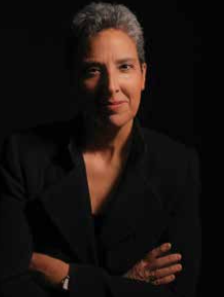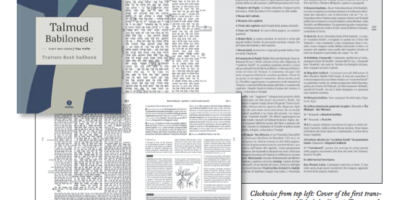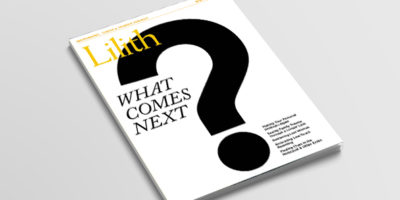
The Revolution Will Not Be Translated
 It was love at first sight. As soon as I began learning Talmud at the Conservative movement’s Jewish Theological Seminary, I was in love with the Rabbis and their radical project.
It was love at first sight. As soon as I began learning Talmud at the Conservative movement’s Jewish Theological Seminary, I was in love with the Rabbis and their radical project.
It was the first time I’d ever learned Talmud. But it was so familiar to me. The dynamic discussions. The back and forth of the argumentation. The challenges and resolutions. The demand for proof. The faulty proofs. Then the better ones. It felt exactly like the dinner table conversation when I was a kid!
It was how my father thought. How he wanted us to think. And how he wanted us to walk through the world. To see that which was hidden beneath the obvious. To appreci- ate complexity over simplicity. To be able to tolerate ambiguity, contradiction, and paradox. And to develop and follow our moral intuition—even if it meant breaking the rules—to do the right thing.
My father was a living Talmud! Yet he had never seen a page of Talmud in his life. How could that be? And then I realized: my father grew up in a world where he was shaped by the Talmud learning of others —the effects of which had leached out into our cultural DNA to create what we’ve come to recognize as the Jewish character. The Jewish mind. The yiddishe kop. But it’s even bigger than that. It’s at the core of the yiddishe neshama—the soul of who we are as Jews.
I would like to suggest that the experience of learning Talmud is the intellectual, spiritual, and moral engine that has driven who we are as a people, who we strive to be as individuals, and the impact we’ve had on the world.
Yet over the last 2,000 years, just 1% of the Jewish people has had access to it! What might the world look like, I wondered, if the other 99% of us were shaped by that same transformative experience firsthand?
There’s a well-known story in the Talmud about the yeshiva at Yavneh not long after the Destruction of the Second Temple. Rabban Gamliel, the head of the yeshiva, shaken by an uncertain future, has doubled down on conformity as a way to create unity, and has become belligerent, authoritarian, and a bully, excommunicating anyone who disagrees with him.
He posts guards at the doors, admitting only those who share his worldview. Eventually, his students rise up, depose him, drive away the guards, and throw open the doors of the beit midrash to all who want to learn.
That day, the text says, 700 benches had to be added to make room for everyone who wanted in. That day, it goes on to say, thanks to the insights of these formerly marginalized and excluded students, all the questions, dilemmas, and disputes that had remained unsettled for years in the beit midrash, were resolved.
As a lesbian who made the difficult decision to sneak past the guards at the gate by going into the closet for six years to learn Talmud at JTS (back in the day)—it was clear to me that the doors to the beit midrash, the inner sanctum of the tradition, to the Talmud itself—learned in the original language, in all its power to shape our thinking and strengthen our moral courage—needed to be thrown open once again.
But this time, even wider.
So, with lots of help, we created SVARA in Chicago, a traditionally radical yeshiva. To open up the doors of the beit midrash to the other 99%:
To the queers and the radicals.
The activists and the artists.
The observant and the non-observant. The Jews who never went to day school or camp or Hebrew school.
The women who never had the chance and the women who never even thought they wanted that chance.
And to the folks who went out and learned their alef-bet just so they could have the chance.
Because, at the end of the day, what turned out to be much more significant than the fact that I’d snuck into rabbinical school as a queer person, was the fact that I’d snuck into rabbinical school with only my alef-bet. And so I knew that if I could do it, they could do it, too.
At SVARA, everyone learns Talmud in the original Hebrew and Aramaic. From the Vilna Shas, from Day One. No one learns in translation. Ever. As our swag declares: “The revolution will not be trans- lated.” The students come to be players —to be masters of the thickest, smartest, most sophisticated and powerful version of Judaism that we possess, and to bring their life experience and moral intuition —their svara —to bear on the issues of our time.
This year, 700 students have come to learn at SVARA. That’s 700 benches. Just imagine the answers they’ll find to the unresolved questions we’re leaving them with.
Founder and Rosh Yeshiva of SVARA: A Traditionally Radical Yeshiva in Chicago, Rabbi Lappe is a recipient of the 2016 Covenant Award for her work. This is adapted from her acceptance speech.



